May 7, 2024
Immediately after our wonderful Rijksmuseum tour we hoofed it across multiple canals and down many a cobbled street to meet Captain Eric and six of our closest (not!) “friends” for a small group canal tour. If you ever get a chance to explore Amsterdam, this is the way to do it, and Cpt. Erik is the man to do it with. He’s knowledgeable, entertaining, and full of surprises.
Cpt. Erik greeted us with a pristine electric boat, beautifully dressed out in wood, snacks and beverages at the ready. We were expecting maybe cheese and crackers and some cheap wine, but Erik laid out the good stuff – amazing young Gouda cheese, melt-in-your-mouth cheddar cheese sticks, mini Stroopwafels (a Dutch staple!), gingerbread cookies, potato chips, grapes…it was yummy! There were plenty of choice beverages to wash it down with, and along the way he even made a special stop for fresh hot bitterballen, a Dutch appetizer made by making a very thick stew laden with meat, forming it into balls, breading the balls and deep frying them. The bitterballen are usually served with a healthy portion of mustard. Pam wasn’t particularly fond of them but Ken thought they were just fine!


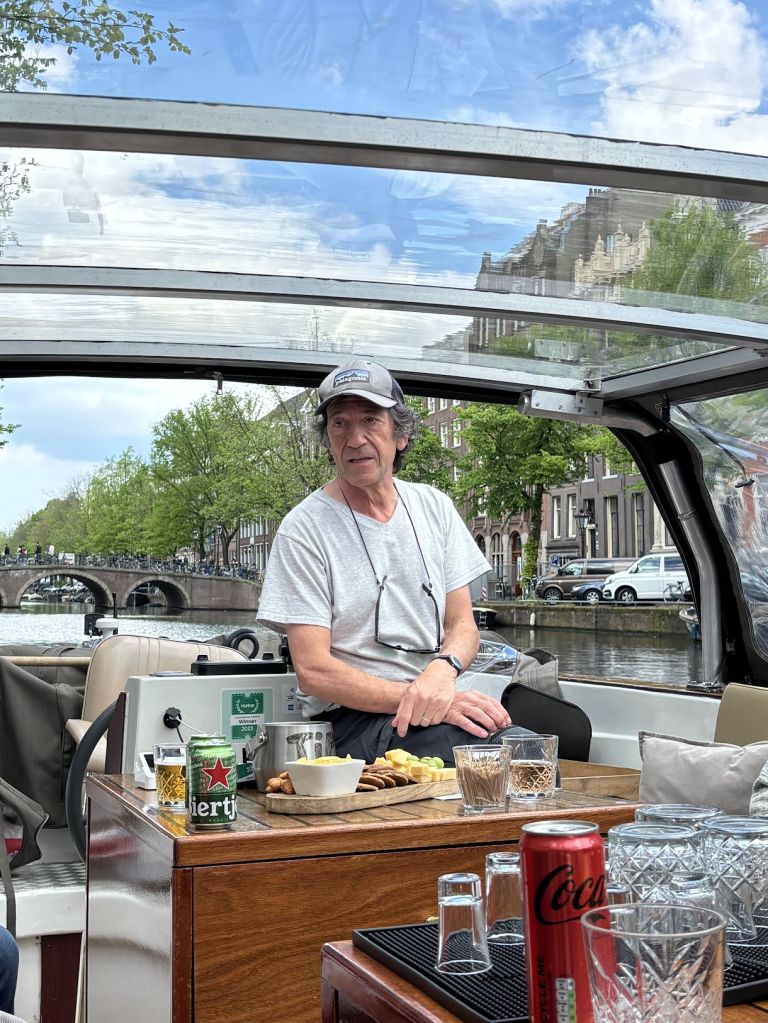

As we made our way around the canals the Captain sprinkled bits and pieces of personal information in with his stories of Amsterdam. Not only is he a canal tour guide, he is also involved with Plastic Whale, a company offering chartered canal tours that combine a bit of history with public service. Guests help collect plastic and other forms of garbage from the canal as they learn the history of the town. Plastic Whale then turns that plastic into foam and felt used to make modern office furniture and the boats Plastic Whale uses to conduct its tourist/cleanup operations. To date they’ve built 14 (!) boats. In 2019 they fished out over 40,000 plastic bottles.
He is also an accomplished documentary filmmaker whose most recent project, “The Spectacular Absence of God” (https://memphisfilm.net/project/god-shines-through-absence/?lang=en) was chosen for the American Jewish Film Festival in 2022. Erik’s mother and father were Holocaust survivors, and his mother was a friend of Anne Frank’s. They attended the same school and birthday parties, and when his mother passed the family found an original copy of the “The Diary of Anne Frank” among her possessions. It is on display in the National Holocaust Museum, the first and only museum of its kind in the Netherlands, which opened March 10, 2024.
Now, about that tour…
The City of Amsterdam is 7 feet below sea level – ironically, the same as New Orleans! Our Louisiana readers can identify all too well with the challenges this created for its early inhabitants, and for many locals those challenges also explain why the Dutch have such a high level of tolerance for differences of opinion/lifestyles. When you’re constantly relying on your neighbor to help you bail your house out or save all your worldly possessions you don’t really care how they feel about the mores of the day.
It was founded in 1250 with the building of a dam (Amsterdam means “dam in a wattery area”), but was not officially recognized as a city until 1275. In that year, Floris V granted the people living near the dam on the Amstel River freedom to navigate the waters of the Province of Holland without paying tolls. The lands around the Amstel River actually belonged to the Bishop of Utrecht (a city a little southeast of Amsterdam), but were ruled on his behalf by the Lords of Amstel. All boats and ships passing through the surrounding waterways were subject to a heavy tool, collection of which fell to the Lords. They were threatening to declare independence from the Bishop. Floris V put a stop to this, and to win the hearts and minds of the people in the local area, he granted freedom from tolls – a preview of the many benefits of joining mighty Holland!

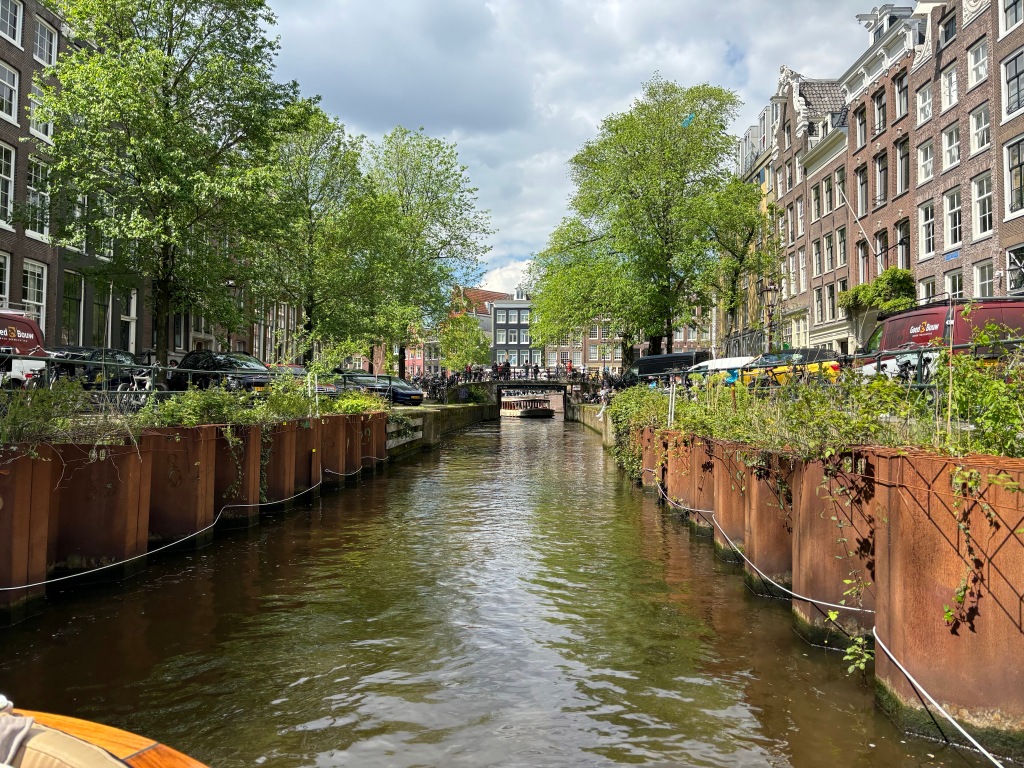
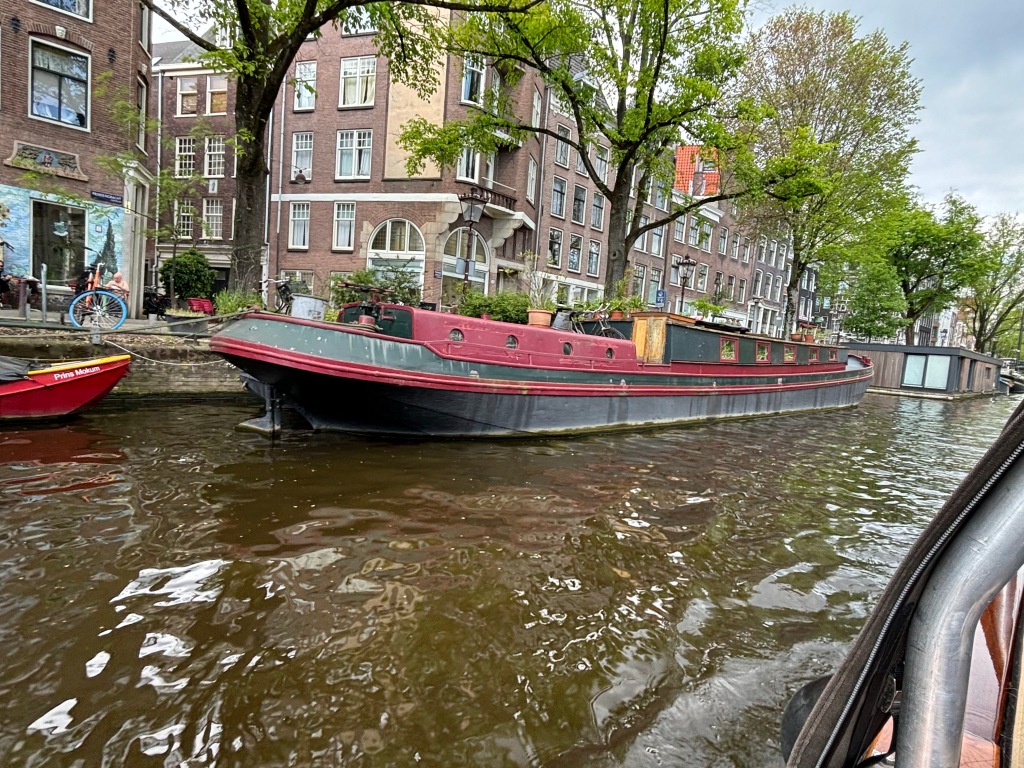
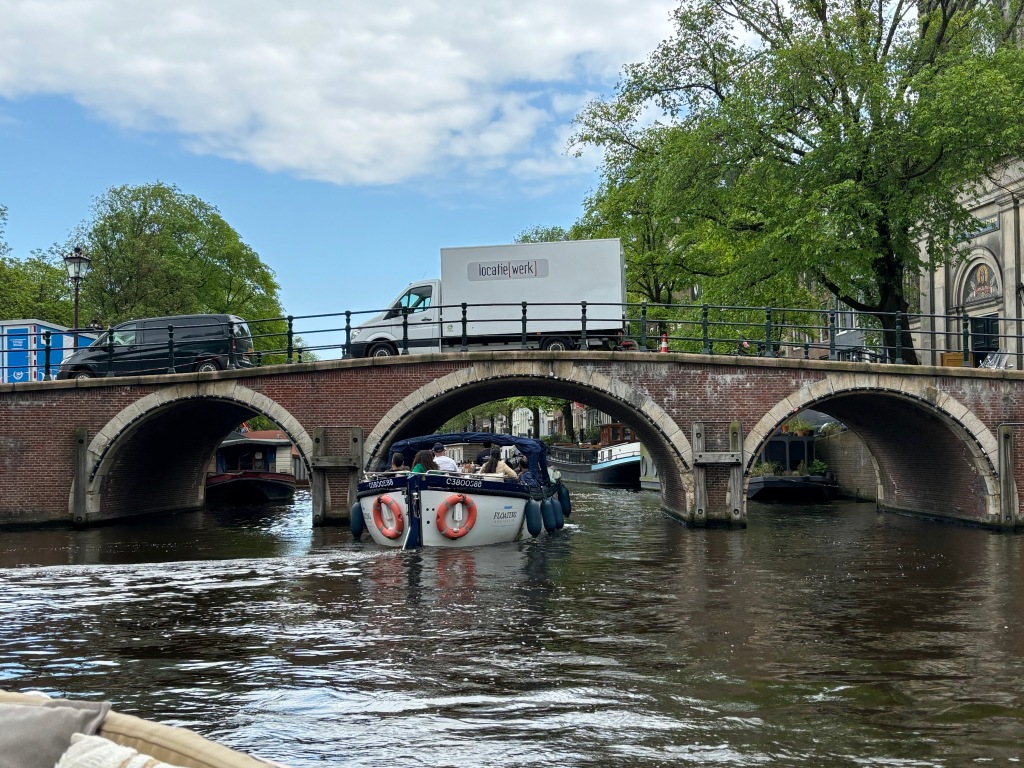

The canals were built in 1648 to help regulate the city’s water levels and protect it from flooding, and to allow goods to be transported around the city more quickly. Today Amsterdam has 165 canals, spanned by more than 1,500 bridges. The canals are abou10 feet deep and do sometimes freeze. Cpt. Erik shared these pictures of folks enjoying themselves when that happens.

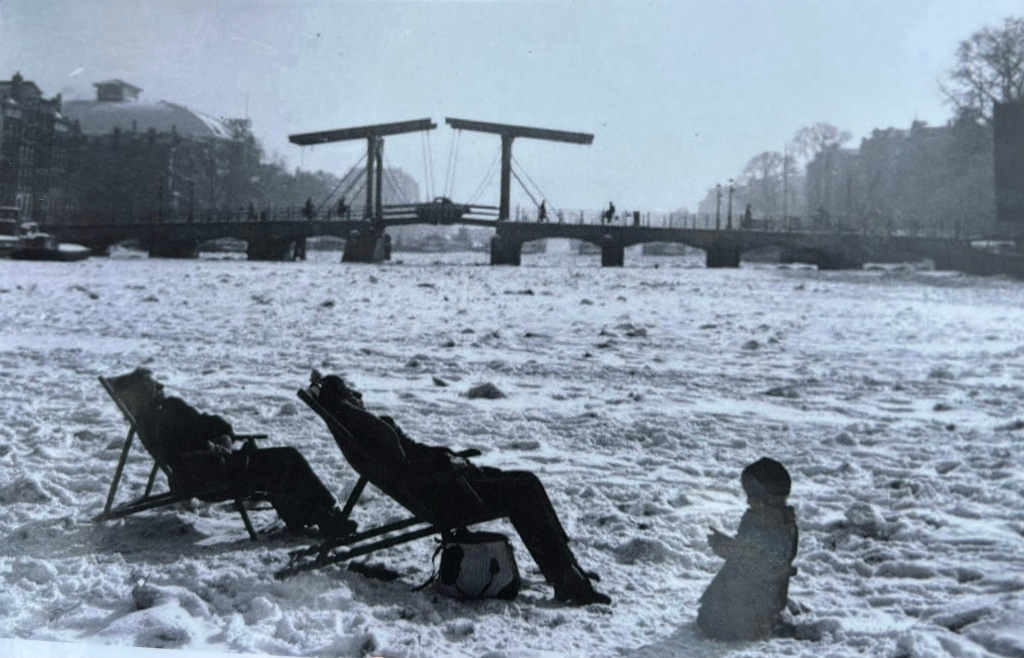
These canals are also home to 2700 houseboats. Slips are controlled by the city and homeowners pay betwee $1,500 and $3,000/year for the privilege of hooking into city utilities, and an additional rental fee for the slip. But if you think a houseboat might be a cheap alternative to the high cost of brick and mortar homes in Amsterdam, think again. The houseboats along the stretch shown below go for over $1 million – and they are definitely nothing fancy.
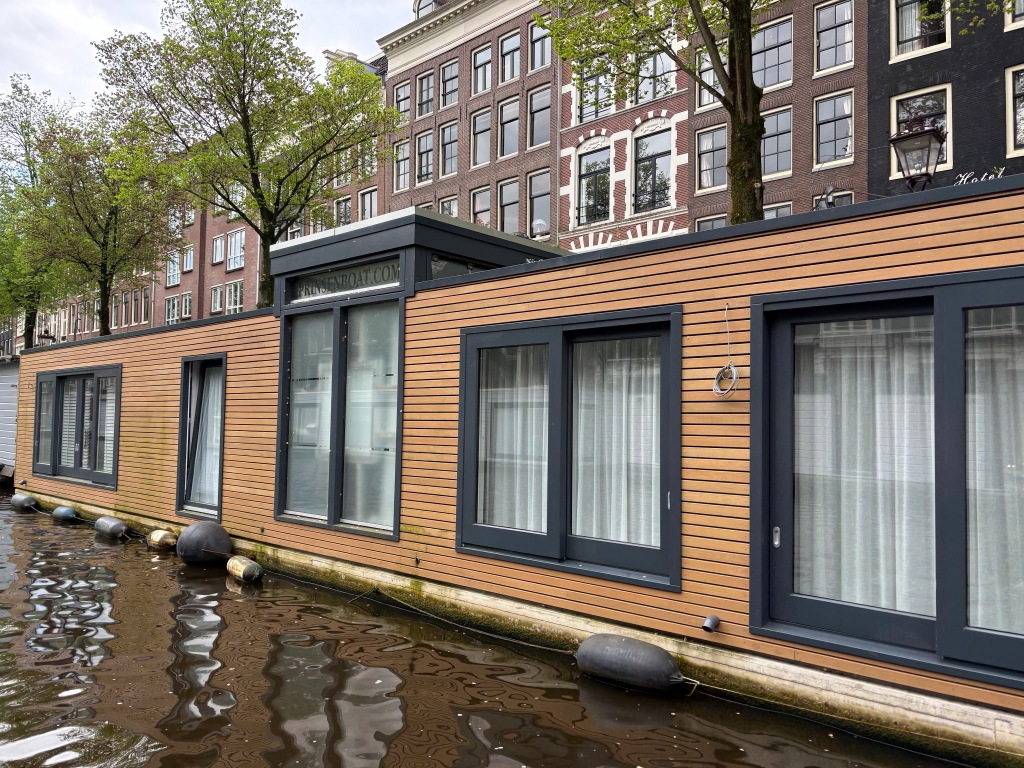
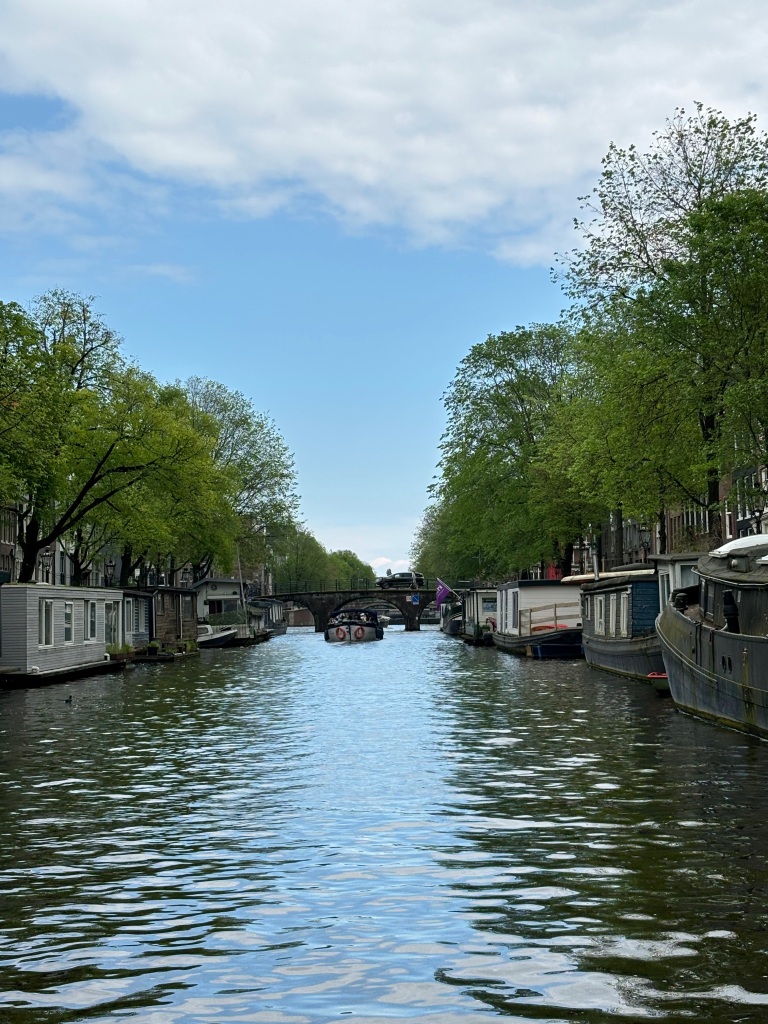
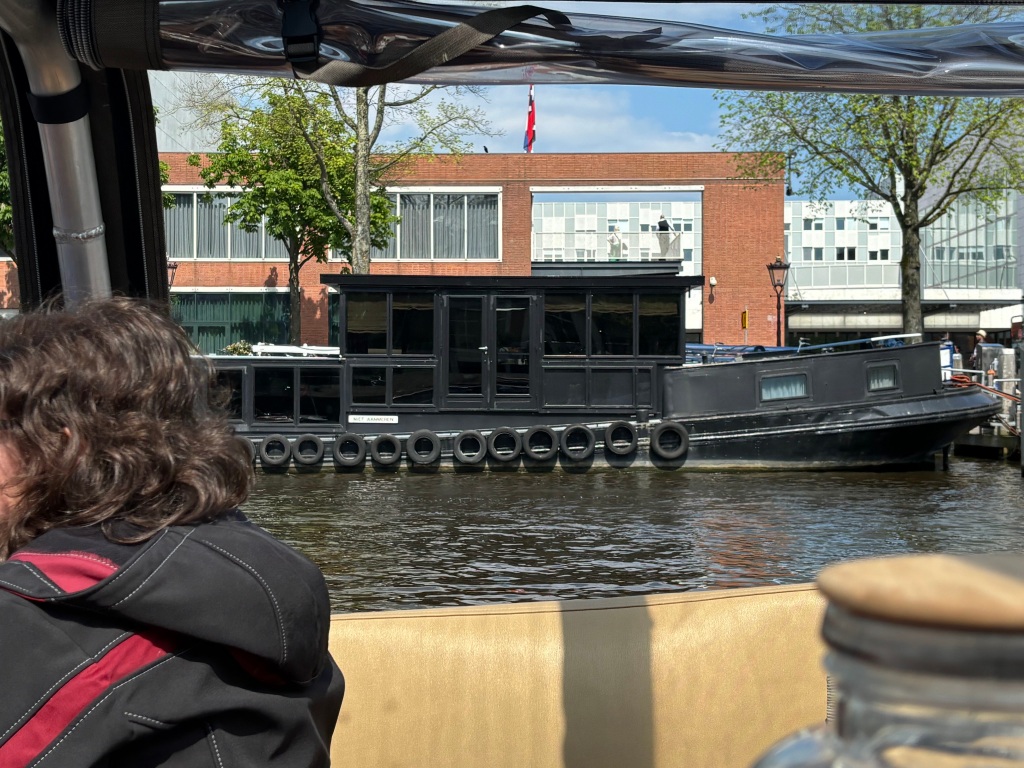
All available slips in the are in use. If you want to bring in a new houseboat you have to buy someone else’s houseboat, move it out and bring your new one in.
All houseboats must be removed from the water and inspected once every 7 years. If you look closely at some of these houseboats you can see that there’s no way they’re going to fit under the bridges to get them to an area where they can be safely removed from the water. Not a problem! The homeowner calls the city, the city opens the locks and drains some water out of the canals – not too much, just enough to give the houseboat the 10″ clearance required to pass under the bridges – and when the boat is out the city lets a little water back in and closes the locks again…all at no cost to the homeowner!
Folks in Amsterdam are fond of saying, “God created the world; the Dutch created Holland.” Amsterdam is literally built on a blog, and many of the 90 islands that make up Amsterdam were built by filling in canals. This means the top layers of soil that make up the land can be a bit unstable to build on. All of Amsterdam’s structures are built on piles, large stakes driven into the ground until they reach the first layer of stable sand. Historically these piles were made of wood. What do you think happens to wood that’s been buried 35 feet under water for over 500 years? You guessed it! It deteriorates, leading to this…
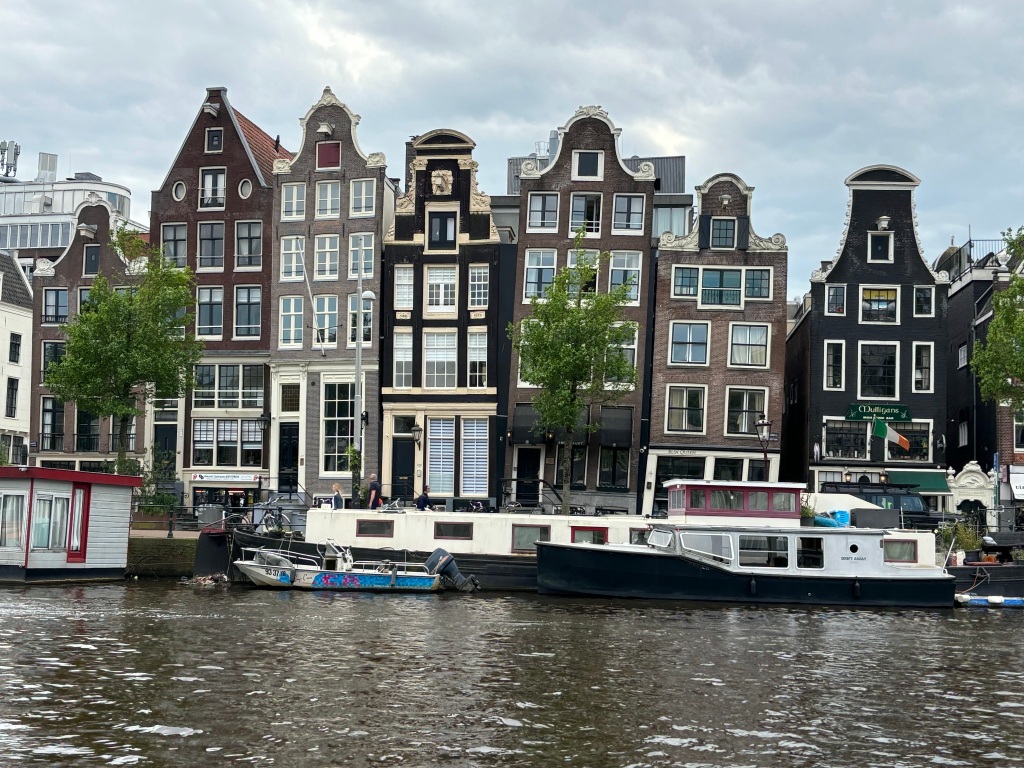
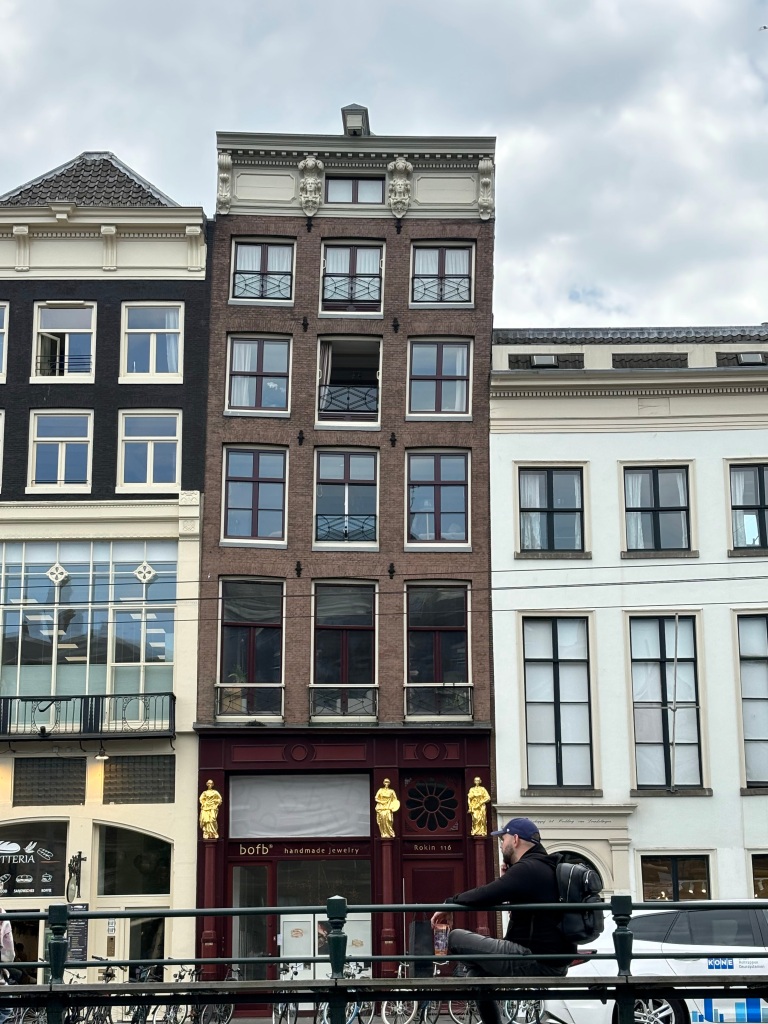
Do you see how the buildings are leaning? This group of homes on the left is called “the Dancing Ladies.” You see this everywhere around the city. Eventually every structure will have to replace their piles – at no small cost. Doing so used to require removing all of the walls and the bottom floor of a home, and then replacing them after the piles had been replaced. Today piles are divided into three sections, which allows the homeowner to remove only the bottom of the home – at a cost of $100,000 – $120,000. We think it’s bad when a roof needs to be replaced! But don’t judge a book by its cover; once a house begins to tilt like this there’s no going back. The only way to get your house to straighten up is to tear it down and start over. Instead, most people replace the floors so that they’re no longing tilting and call it good.
Yesterday I talked about the men who had to be fished out of the canals due to wild peeing. Today we’ll show you a picture Cpt. Eric shared of some of the reported 14,000 bicycles officials remove every year!
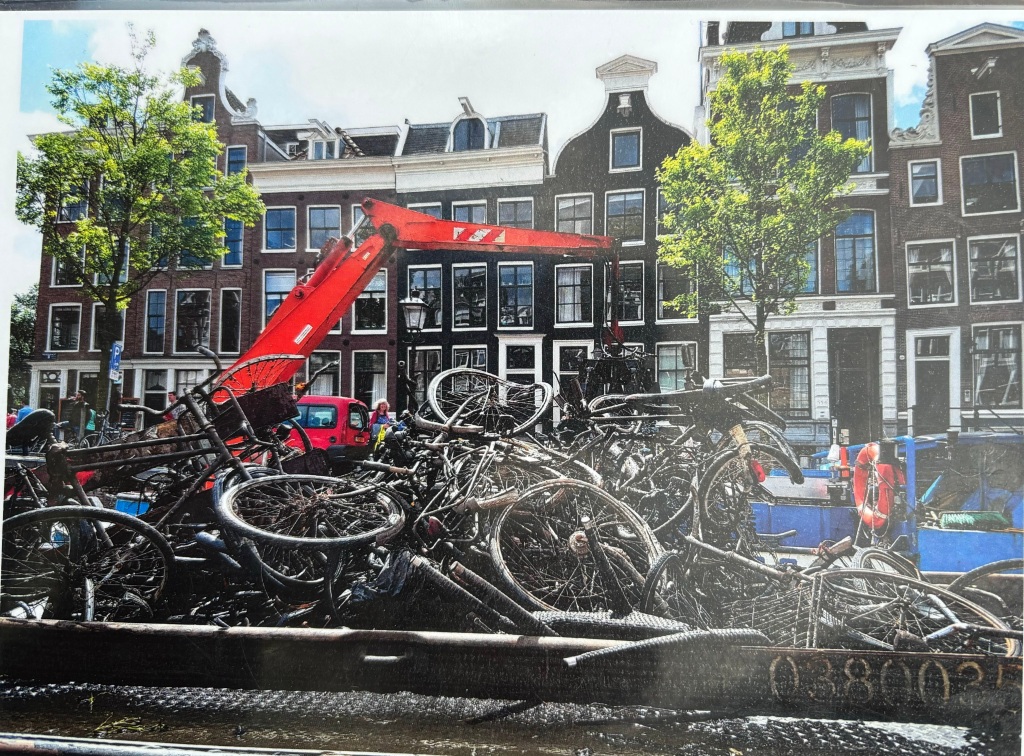
Who knows how all these bikes landed in the canals. One thing’s for sure – it wasn’t from dodging speeding cars. The maximum speed limit within Amsterdam’s city limits is a whopping 18 mph. And parking’ s no fun, either. It costs about $7.50/hour to park, and space is limited. Most of it is located along the canals – either as angled or parallel – on very skinny streets. Erik shared that not too long ago his neighbor went just a little too far and sent his front wheel over the edge of the canal. When this happens you have to block off the streets, bring in a big truck and pull your car off the ledge. Ugh!
Erik shared this photo of his own parking prowess. He says the street he lives on is so narrow he has to park with his tires half-way over the ledge.

Is he telling the truth? You be the judge…


It sounds like you guys are having a great time! I love the commentary and pictures of your travels!
Ham
LikeLike
So nice to hear from you. How are you?
LikeLike
Doing well, thanks! Enjoying retirement and getting prepared for the hot summer that’s coming our way in Florida!!
LikeLike